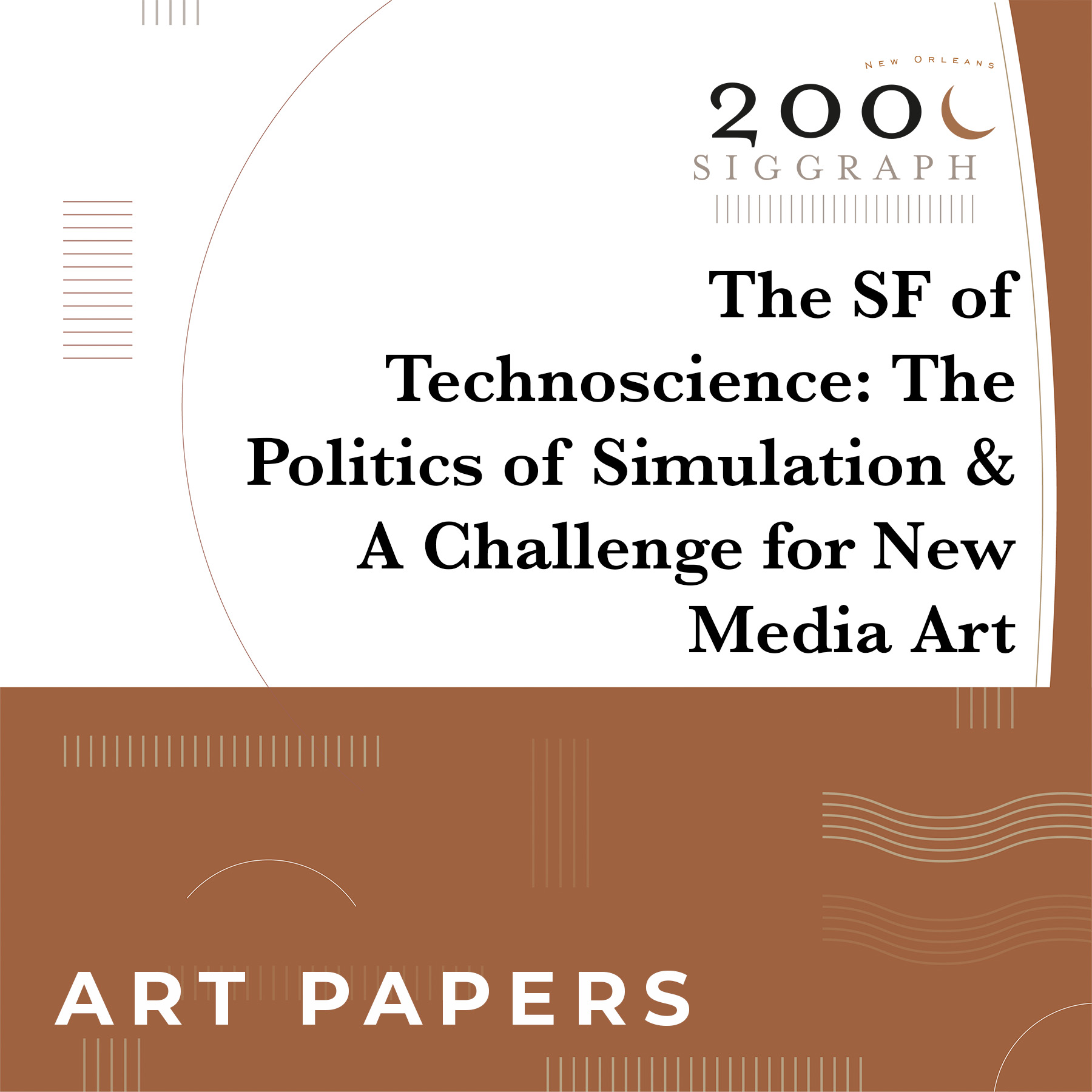“The SF of Technoscience: The Politics of Simulation & A Challenge for New Media Art” by Thacker
Conference:
Type(s):
Title:
- The SF of Technoscience: The Politics of Simulation & A Challenge for New Media Art
Presenter(s)/Author(s):
Abstract:
“In fact, science fiction … is no longer anywhere, and it is everywhere, in the circulation of models, here and now, in the very principle of the surrounding simulation.”
— JEAN BAUDRILLARD
“Biology is becoming an information science … and it will take increasingly powerful computers and software to gather, store, analyze, model and distribute that information.”
— BEN ROSEN
Chairman, Compaq Computer Corporation
“The best way to predict the future is to invent it.”
— RICHARD FEYNMAN
One of the significant characteristics of the last decade, and the new millennium, is the way in which advancements in biotechnology and medicine have come to the attention of the public, through the media, as one of the primary areas in which the future is being vigorously imagined. What distinguishes biotechnology from other sciences is the way in which it is increasingly fusing genetic code with computer code, encapsulated in what Incyte Pharmaceuticals calls “point-and-click biology.”
References:
1. Baudrillard J. (1983). Simulations. New York: Semiotext(e).
2. O’Brien, S. (2000, January 20). Biotech industry gets Clinton’s endorsement. CBS Marketwatch (cbs.marketwatch.com). The president’s statement can be found at the White House Web site: www.pub.whitehouse.gov.
3. Biospace.com. (2000, January 6). Biotech 2030: Eight visions of the future. www.biospace.com.
4. Recent histories of SF include Brian Aldiss’s Trillion Year Spree: A History of Science Fiction and Edward James’s Science Fiction in the Twentieth Century. A good reference work is Clute, J. & Nicholls, P. (eds.). (1995) The Encyclopedia of Science Fiction. New York: St. Martin’s.
5. In his book Constructing Postmodernism (New York: Routledge, 1992), Brian McHale discusses the differences between extrapolation and speculation: “Extrapolative SF begins with the current state of the empirical world … and proceeds … to construct a world which might be a future extension or consequence of the current state of affairs.” (p. 244) “Speculative world-building, by contrast, involves an imaginative leap, positing one or more disjunctions with the empirical world which cannot be linearly extrapolated from the current state of affairs.” (p. 244).
6. Ibid., p. 247.
7. Jameson, F. (1982). Progress versus utopia; or, can we imagine the future? Science Fiction Studies 27, 147-58.
8. Baudrillard, J. (1997). Simulacra and science fiction. In Simulacra and Simulation. Ann Arbor: University of Michigan Press.
9. Hugo Gernsback (1884-1967) is often referred to as the father of genre SF. In the late 1920s, he began publishing a magazine called Amazing Stories, which published a number of well-known SF authors of the “Golden Age” of SF. In addition, he formulated a term for a new type of fiction emerging at the turn of the century (as exemplified by Verne and Wells): “scientifiction,” in which adventure and romance plots were combined with elements from science and technology (primarily physics, astronomy, engineering).
10. Baudrillard, op.cit., 122.
11. More information on the NASA Ames Virtual Collaborative Clinic can be found at: biocom p.arc. nasa.gov /teleMed /vcc.htm I.
12. Mooney D. & Mikos, A. (1993, November). Growing new organs. Scientific American, 12.





